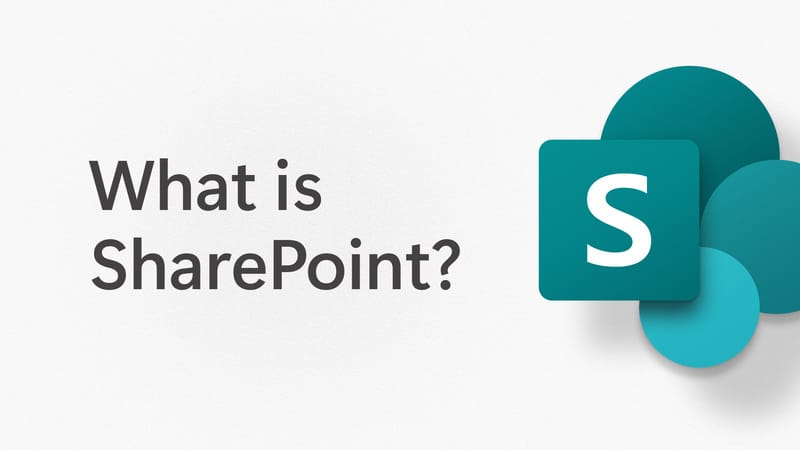Want to hire Microsoft SharePoint developer? Then you should know!
Microsoft SharePoint is a browser based software that gives you and any developer you collaborate with remote and simple access to your SharePoint applications, enabling you to work highly collaboratively and at your convenience in any business. So, hiring a freelance Microsoft SharePoint developer is a quick and cost-effective way to transition your company into the data-enabled, modern workplace and get the results you require for business development.

SharePoint developers are professional computer users with years of experience working with enterprise software. A SharePoint developer can guide you through the process of discovering and evaluating areas of your company that can be benefited by using various SharePoint services including web content management, social media enterprise, and cloud. Microsoft SharePoint developers can also work with your company or organization to create and implement unique Microsoft SharePoint applications from scratch.
The global economy produces more digital information than ever before. It is a tiresome and time-consuming process to coordinate all the technologies and information that comes into contact with contemporary business. Data management, intranet, cloud storage, business intelligence tools and so on are available to deliver a wide range of automated services for any business model or size. Microsoft SharePoint integrates this enormous array of apps, software and services across SME companies into one single centralized web app. Microsoft SharePoint developers on Upstaff can leverage the potential of Microsoft SharePoint to benefit you and your business.
Sharepoint Developer Roles:
- SharePoint Designer
- Information Architect
- User Experience Lead
- SharePoint Solutions Architect
- SharePoint Business Analyst
Hire SharePoint Developer
Looking to snag a SharePoint developer who can twist Microsoft 365 into something that actually works for you? SharePoint’s been a heavy hitter since way back, and by March 24, 2025, it’s still the go-to for rigging up sites, docs, and team flows that don’t flop. These devs sling the SharePoint Framework—SPFx in the lingo—cranking out custom bits that hook into your data or juice up Teams without a hitch. Need a sharp intranet or a Viva tweak that doesn’t suck? They’ve got the hands to make it roll.
They’re not just button-pushers—SharePoint devs wrestle a platform that’s a tangled mess of tools and tricks. In 2025, it’s all about slick, modern vibes—apps that look good on your phone or screen, no clunky frames gumming it up. Whether you want a Teams tab that hums or a page that doesn’t make your eyes bleed, these pros dig in and deliver—rough, ready, and straight from SharePoint’s core.
What SharePoint Developers Do
SharePoint’s dev scene kicked off years back, but the docs peg SPFx as the real deal since 2016—client-side, JavaScript-driven, no server babysitting. By 2025, it’s the go-to for building web parts or extensions—think a dashboard that pulls live SharePoint data or a Teams tab that doesn’t lag. Devs use it to customize modern pages, not the clunky classic stuff, and it runs in the browser, tied to whoever’s logged in—no sandbox nonsense.
- The tech’s flexible—SPFx lets devs pick their poison: React, Vue.js, Angular, whatever JavaScript flavor they swing. It’s got a fat SharePoint API too—Microsoft Graph for cross-365 pulls, HTTPClient for auth headaches, and lifecycle hooks to tweak how it loads or configs. Need a SharePoint site that talks to Outlook or Viva? These guys rig it, keeping it snappy and accessible—controls drop right into the DOM, no hacks required.
- Who’s on it? SharePoint developers range wide—some are C# vets jumping to TypeScript, others are web dev punks who grok npm and gulp. The docs push tools like Visual Studio Code, Yeoman for scaffolding, and webpack to bundle it up—open-source grit, not proprietary fluff. They’re not cheap—$50-$120 an hour freelance in the US, $90k-$140k full-time in 2025—but they save your ass when SharePoint’s quirks bite.
- What’s the gig? Think web parts—like a news feed that updates without a refresh—or extensions that tweak page commands. Docs show it’s big on Teams too—build a tab with SPFx, and it’s SharePoint data in disguise. SharePoint Embedded’s newish in 2025—headless content apps—and devs can sling that for custom storage plays. It’s not just Online either—Server 2016 up to Subscription Edition still runs SPFx, though older versions lag.
Downside? Docs warn the DOM’s no playground—page HTML shifts, so devs lean on SPFx APIs or risk breaking when Microsoft tweaks styles. It’s not a free-for-all—tenant admins gotta greenlight solutions, and unsupported hacks get no love. Still, by 2025, it’s the safest bet—add-ins are dying, and SPFx is Microsoft’s golden child for SharePoint’s future.
Why care? SharePoint’s baked into 365—sites, lists, libraries—and devs make it bend. Need a column formatter or a Viva Connections card? They’ve got it. Performance holds up—no iFrame lag—and it scales from self-service team sites to big org portals. In 2025, it’s less about classic hacks and more about modern, mobile-ready wins—hire a SharePoint developer who knows the ropes, and your setup’s gold.
Future’s tight—docs say SPFx keeps growing, with Teams and Viva hooks getting deeper. SharePoint Embedded might pop off for app devs, and Graph integration’s only fattening up. It’s not a startup toy—enterprise runs it hard—so these devs stay in demand, grinding out solutions that don’t choke under real-world load.
Talk to Our Expert
Our journey starts with a 30-min discovery call to explore your project challenges, technical needs and team diversity.

